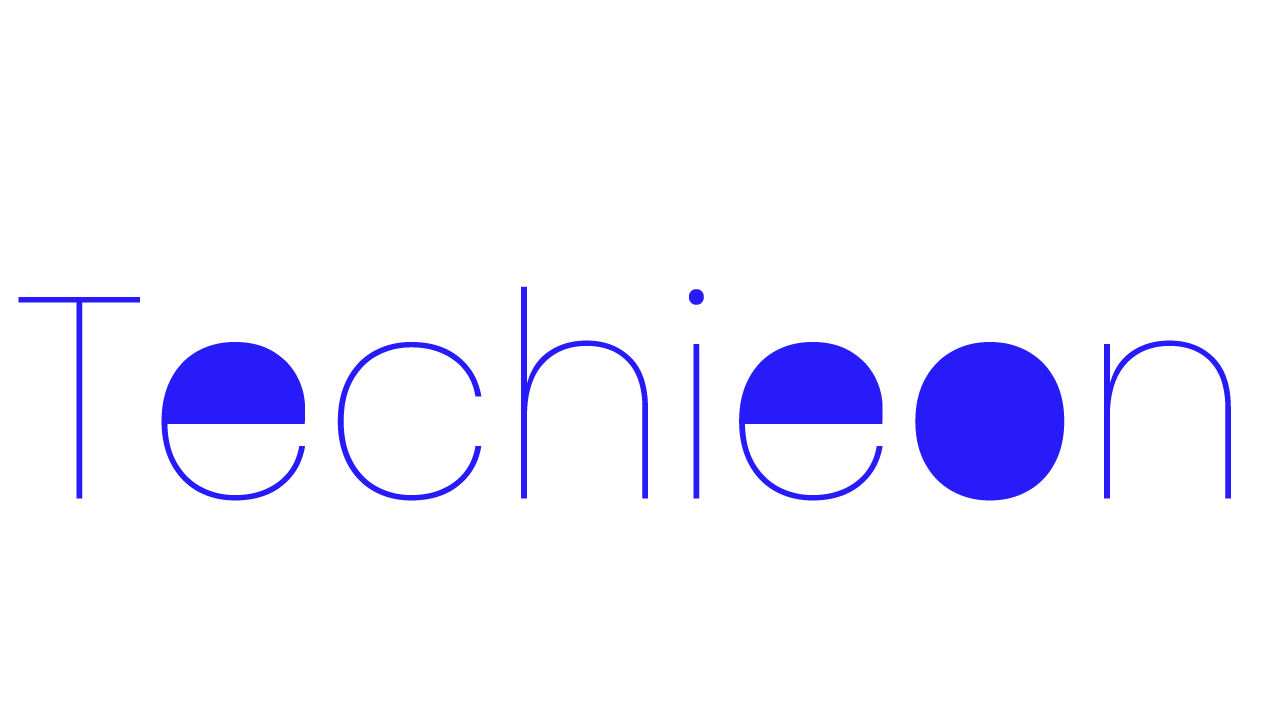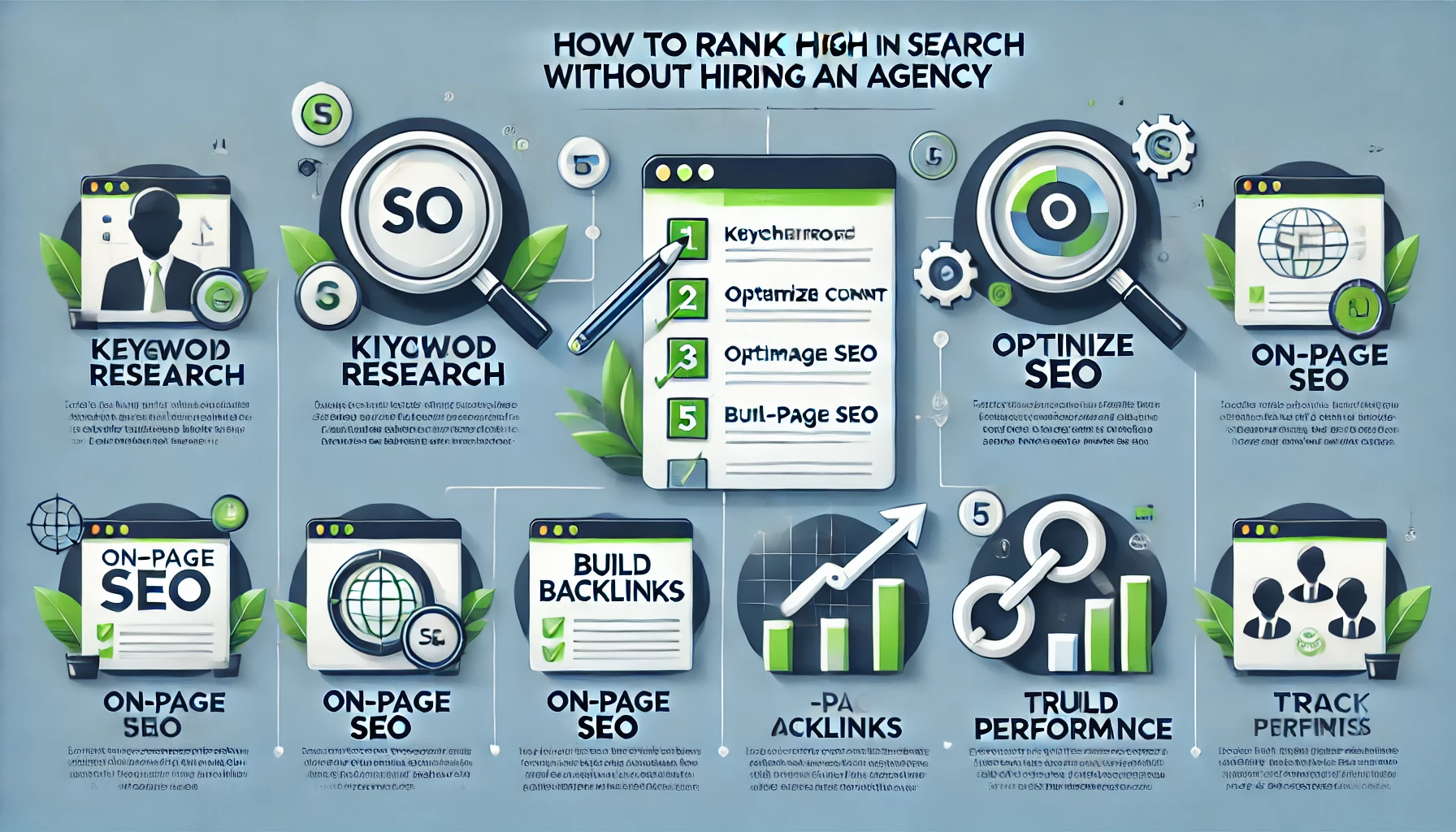In today’s digital age, a strong online presence is crucial for any business or individual looking to thrive. And at the heart of this online presence lies your website’s visibility on search engine results pages (SERPs). While SEO agencies can offer valuable expertise, achieving high search rankings is entirely possible through DIY efforts. This comprehensive guide will equip you with the knowledge and strategies to conquer the SERPs and drive organic traffic to your website, all without relying on external agencies.
1. Keyword Research: The Foundation of SEO Success
Keywords are the linchpin connecting your content with users actively searching for information, products, or services. Effective keyword research unveils what your target audience is seeking and how they’re phrasing their queries. This insight is invaluable in crafting content that resonates and ranks well.
1.1 Understanding Your Audience and Their Search Intent
Before diving into keyword research tools, take a step back and truly understand your audience. Consider their demographics, interests, pain points, and motivations. What questions are they asking? What problems are they trying to solve?
Once you have a grasp of your audience, delve deeper into their search intent. Are they looking for information, to make a purchase, or to be entertained? Aligning your content with search intent is crucial for attracting the right visitors and satisfying their needs.
1.2 Keyword Research Tools: Free and Paid Options
Several tools can assist you in uncovering relevant keywords:
- Google Keyword Planner (Free): A fundamental tool offering insights into keyword search volume, competition, and related keywords. It’s a great starting point for brainstorming and identifying potential targets.
- Ahrefs (Paid): A comprehensive SEO suite providing in-depth keyword data, including search volume, keyword difficulty, and SERP analysis. It also offers backlink analysis, competitor research, and site auditing capabilities.
- Semrush (Paid): Another powerful SEO platform with a wide array of features, including keyword research, competitor analysis, rank tracking, and content optimization tools.
- Moz Keyword Explorer (Paid): Provides keyword suggestions, SERP analysis, and difficulty scores. It also offers features for link building and on-page optimization.
1.3 Targeting Long-Tail Keywords for Higher Conversion
While high-volume keywords might seem tempting, they often come with fierce competition. Consider focusing on long-tail keywords – longer, more specific phrases that target niche audiences.
For example, instead of “shoes,” target “best running shoes for flat feet women.” Long-tail keywords generally have lower search volume but also lower competition, making it easier to rank and attract highly qualified visitors.
1.4 Analyzing Keyword Difficulty and Competition
Not all keywords are created equal. Some are highly competitive, requiring significant effort to rank, while others are less contested. Keyword difficulty scores, provided by tools like Ahrefs and Semrush, can help you assess the challenge of ranking for specific keywords.
In addition to keyword difficulty, analyze the competition. Examine the top-ranking pages for your target keywords. What type of content are they producing? What are their backlink profiles like? Understanding your competition can reveal valuable opportunities and inform your SEO strategy.
2. On-Page Optimization: Fine-Tuning Your Website
On-page optimization refers to all the measures you can take directly on your website to improve its search rankings and user experience.
2.1 Optimizing Content for Relevance and Readability
- Strategic Keyword Placement: Naturally incorporate your target keywords throughout your content, including headings, subheadings, body text, and image alt text. However, avoid keyword stuffing, which can harm your rankings.
- Engaging and Informative Content: Create high-quality content that provides value to your audience. Focus on answering their questions, addressing their pain points, and offering unique insights.
- Readability and Formatting: Ensure your content is easy to read and scan. Use clear headings, bullet points, short paragraphs, and visuals to break up text and improve comprehension.
2.2 Website Structure and Navigation
- Logical Hierarchy: Organize your website with a clear hierarchy, starting with your homepage and branching out into categories and subcategories. This makes it easier for both users and search engines to navigate your site.
- Internal Linking: Connect relevant pages within your website using internal links. This helps users discover more content and signals to search engines the relationship between different pages.
- User-Friendly Navigation: Implement a clear and intuitive navigation menu that allows users to easily find what they’re looking for.
2.3 Site Speed Optimization for Enhanced User Experience
Website speed is a crucial ranking factor and significantly impacts user experience. A slow-loading website can lead to high bounce rates and lost conversions.
- Image Optimization: Compress images to reduce their file size without sacrificing quality. Use tools like TinyPNG or ShortPixel to optimize your images.
- Browser Caching: Enable browser caching to store website data on users’ devices, allowing for faster loading on subsequent visits.
- Content Delivery Network (CDN): Utilize a CDN to distribute your website’s content across multiple servers worldwide, reducing loading times for users in different locations.
- PageSpeed Insights: Use Google’s PageSpeed Insights tool to analyze your website’s speed and identify areas for improvement.
2.4 Title Tags and Meta Descriptions: Your Website’s First Impression
- Compelling Title Tags: Craft concise and informative title tags that accurately reflect the content of your pages. Include your target keywords naturally.
- Informative Meta Descriptions: Write compelling meta descriptions that entice users to click through to your website. Keep them under 160 characters to avoid truncation in search results.
3. Off-Page Optimization: Building Authority and Reputation
Off-page optimization encompasses all the activities you undertake outside your website to improve its search rankings. It primarily revolves around building high-quality backlinks and establishing your online presence.
3.1 Backlinks: The Currency of SEO
Backlinks, or inbound links, are links from other websites to your own. They act as votes of confidence, signaling to search engines that your content is valuable and trustworthy. The more high-quality backlinks you have, the higher your website is likely to rank.
- Guest Blogging: Contribute high-quality articles to reputable websites in your niche. Include a link back to your website in your author bio or within the content (where appropriate).
- Forum Participation: Engage in relevant online forums and communities. Provide valuable insights and include a link to your website in your forum signature or profile.
- Outreach and Relationship Building: Connect with influencers, bloggers, and website owners in your industry. Build relationships and explore opportunities for collaboration and link exchange.
- Broken Link Building: Identify broken links on other websites and offer your content as a replacement. This is a win-win situation, as you gain a backlink and help the website owner fix a broken link.
- Content Promotion: Promote your content on social media, email newsletters, and other channels to increase its visibility and attract backlinks.
3.2 Social Media Marketing: Amplifying Your Reach
While social media signals aren’t a direct ranking factor, they can indirectly influence your SEO efforts. A strong social media presence can drive traffic to your website, increase brand awareness, and potentially lead to more backlinks.
- Content Sharing: Share your website content on social media platforms relevant to your audience. Encourage engagement and interaction.
- Community Building: Build a community around your brand on social media. Engage with your followers, respond to comments, and participate in relevant conversations.
- Social Listening: Monitor social media for mentions of your brand or industry. This can provide valuable insights into your audience’s interests and concerns.
3.3 Online Reputation Management: Building Trust and Credibility
Your online reputation plays a vital role in attracting visitors and building trust. Monitor your online reviews and address any negative feedback promptly and professionally. Encourage satisfied customers to leave positive reviews on platforms like Google My Business and Yelp.
4. Technical SEO: Ensuring Search Engine Accessibility
Technical SEO focuses on the technical aspects of your website that affect its visibility to search engines.
4.1 Mobile-Friendliness: Catering to the Mobile-First World
With the majority of internet users accessing websites on mobile devices, Google prioritizes mobile-friendliness as a ranking factor. Ensure your website is responsive, adapting seamlessly to different screen sizes and providing a positive mobile experience.
- Responsive Design: Implement a responsive design that adjusts your website’s layout and content based on the user’s device.
- Mobile-First Indexing: Google predominantly uses the mobile version of your website for indexing and ranking. Ensure your mobile site offers the same content and functionality as your desktop version.
- Mobile Usability: Test your website’s mobile usability using Google’s Mobile-Friendly Test tool. Address any issues identified to improve your mobile experience.
4.2 XML Sitemap: Guiding Search Engines Through Your Website
An XML sitemap is a file that lists all the pages on your website. It helps search engines crawl and index your website more efficiently, ensuring that all your important pages are discovered.
- Sitemap Creation: Create an XML sitemap for your website. Many content management systems (CMS) have built-in sitemap generators.
- Sitemap Submission: Submit your sitemap to Google Search Console and other search engine webmaster tools.
4.3 HTTPS Security: Protecting User Data and Building Trust
HTTPS (Hypertext Transfer Protocol Secure) encrypts communication between your website and users’ browsers, protecting sensitive information like passwords and credit card details. While HTTPS is a minor ranking factor, it’s crucial for user trust and online security.
- SSL Certificate: Obtain an SSL certificate from a trusted provider. Many web hosting companies offer free SSL certificates.
- HTTPS Implementation: Install the SSL certificate on your website and ensure all pages are redirected to HTTPS.
4.4 Schema Markup: Enhancing Search Visibility with Structured Data
Schema markup is a type of code that helps search engines understand the content on your website. It provides context to your content, making it easier for search engines to display your pages in relevant search results.
- Schema Types: Various schema types are available, including articles, products, events, and local businesses. Choose the schema type that best suits your content.
- Schema Implementation: Add schema markup to your website’s HTML code. Google’s Structured Data Markup Helper can assist you in generating schema code.
5. Content Marketing: Creating Valuable and Engaging Content
Content marketing is the cornerstone of SEO success. Creating high-quality, relevant content that resonates with your target audience is essential for attracting visitors, building authority, and earning backlinks.
5.1 Content Strategy: Planning for Long-Term Success
Develop a content strategy that aligns with your business goals and target audience. Consider the following:
- Content Pillars: Identify key topics or themes that are relevant to your audience and business. These will serve as the foundation of your content strategy.
- Content Formats: Explore different content formats, such as blog posts, articles, infographics, videos, and podcasts, to cater to diverse preferences.
- Content Calendar: Create a content calendar to plan and schedule your content creation and promotion activities.
5.2 Creating High-Quality Content that Satisfies User Intent
Focus on creating content that provides value to your audience and satisfies their search intent. Consider the following:
- Informative and Engaging: Provide accurate, comprehensive, and engaging information that answers users’ questions and addresses their needs.
- Original and Unique: Offer unique insights and perspectives that differentiate your content from the competition.
- Well-Written and Edited: Ensure your content is free of grammatical errors and typos. Use clear and concise language.
5.3 Content Promotion and Distribution
Creating great content is only half the battle. Promoting your content is crucial for reaching your target audience and maximizing its impact.
- Social Media Sharing: Share your content on social media platforms relevant to your audience. Use engaging visuals and captions to attract attention.
- Email Marketing: Promote your content through email newsletters. Segment your audience to deliver targeted content that resonates with their interests.
- Community Engagement: Share your content in relevant online communities and forums. Participate in discussions and answer questions related to your content.
6. Tracking and Analyzing: Measuring SEO Performance
Tracking and analyzing your SEO performance is essential for understanding what’s working and what needs improvement.
6.1 Google Analytics: Understanding User Behavior
Google Analytics provides valuable insights into your website traffic, user behavior, and conversions. Track key metrics such as:
- Website Traffic: Monitor the number of visitors to your website, their sources, and their demographics.
- User Behavior: Analyze how users interact with your website, including pages visited, time spent on site, and bounce rate.
- Conversions: Track the number of users who complete desired actions, such as making a purchase or filling out a contact form.
6.2 Google Search Console: Monitoring Search Performance
Google Search Console offers valuable data on your website’s performance in Google search results. Track key metrics such as:
- Search Queries: See the search queries that are driving traffic to your website.
- Impressions and Clicks: Monitor the number of times your website appears in search results (impressions) and the number of times users click on your listing (clicks).
- Crawl Errors: Identify any crawl errors that are preventing Google from indexing your website properly.
- Backlinks: See which websites are linking to your website.
6.3 Rank Tracking: Monitoring Keyword Performance
Rank tracking tools allow you to monitor your website’s rankings for specific keywords over time. This helps you understand the impact of your SEO efforts and identify areas for improvement.
7. Staying Ahead of the Curve: Adapting to the Evolving SEO Landscape
The world of SEO is constantly evolving. Search engines regularly update their algorithms, and new trends and technologies emerge. Staying informed and adapting your strategies is crucial for maintaining and improving your search rankings.
7.1 Algorithm Updates: Keeping Up with Search Engine Changes
Google and other search engines frequently update their algorithms to improve the quality of their search results. These updates can significantly impact your website’s rankings. Stay informed about algorithm updates and adjust your SEO strategies accordingly.
7.2 Emerging Trends: Embracing New Technologies and Strategies
The SEO landscape is constantly evolving with the emergence of new technologies and strategies. Stay ahead of the curve by exploring and experimenting with:
- Voice Search Optimization: Optimize your content for voice search queries, which are typically longer and more conversational.
- Artificial Intelligence (AI): Leverage AI-powered SEO tools to automate tasks, gain insights, and improve your strategies.
- Video SEO: Optimize your videos for search visibility by using relevant keywords in titles, descriptions, and tags.
Conclusion: The Journey to SEO Success
Achieving high search rankings is a continuous journey that requires dedication, effort, and a willingness to learn and adapt. While SEO agencies can offer valuable expertise, DIY SEO is entirely possible with the right knowledge and strategies.
By conducting thorough keyword research, optimizing your website’s content and technical aspects, building high-quality backlinks, and tracking your performance, you can significantly improve your website’s visibility in search results and drive organic traffic to your site.
Remember, SEO is a marathon, not a sprint. It takes time and consistent effort to see results. Don’t get discouraged if you don’t see changes overnight. Keep learning, experimenting, and refining your strategy. With patience and persistence, you can achieve your SEO goals and dominate the search rankings.




